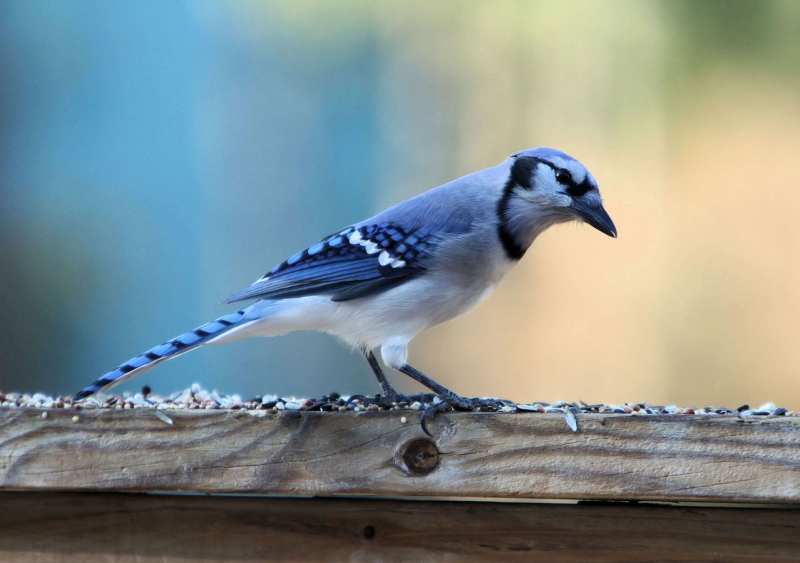Bluebird vs. Bluejay – What’s the Difference?
When we were new to birding, given our region (Northeastern USA) a Bluejay was the only “blue bird” we knew of. Often times people would mention “bluebirds” to us in conversation, and my mind started to wonder … “Are they talking about a Bluejay … or some other bird?”. Given our, now elevated understanding of birds and bird watching, we know that Bluebirds are in fact, a completely different type of bird from a Bluejay.
Commonalities
Before we dive into the differences, bluejays and bluebirds share some common traits. Both birds belong to the Passerine order of birds. Both birds are also Omnivores, meaning they can derive nutrients from plant, or animal (insect) sources. And lastly, but most importantly, both birds are (at least partly) … blue!
BLUEJAY

We already have a great page on Bluejays, however I’ll sum up some of the differences here in relation to bluebirds.
- Bluejays are part of the family Corvidae. Also in the Corvidae family are crows, and magpies.
- Bluejay coloring is vibrant, and includes distinctive “barred” coloring on it’s tail and wings.
- Bluejays, unlike many birds, don’t have a gender difference in coloring or size. This is called sexual dimorphism.
- In a trait likely related to their lack of sexual dimorphism, both the male and female bluejays participate in nest building, and fledgling rearing.
- Bluejays are much larger than bluebirds, commonly growing to 10-12 inches.
- Bluejays have large, strong beaks – which they use to feed on nuts, seeds and acorns.
- Bluejays are much louder and more aggressive than most birds.
- Bluejays don’t migrate and are commonly found in the eastern region of North America.
BLUEBIRD

Bluebird Photo by Jennifer Aldrich
- Bluebirds belong to the Turdidae or “thrush” family as it’s commonly referred.
- Bluebird coloring in comparison to Bluejays is much more subdued or muted. Blue head and wings, with a light brown or orange breast (with regional variations).
- Bluebirds, unlike Bluejays do exhibit sexual dimorphism, with the females appearing duller in color than the males.
- Like many other birds, the female of the species is responsible for nest building and fledgling care.
- Bluebirds are smaller than Bluejays, less aggressive and more passive when it comes to potential danger, preferring to lay low, instead of sounding an alarm like Bluejays.
- Bluebirds have smaller beaks, which limits their diet to fruit and other softer foods.





